We’ve all heard of metrics like bounce rate, time on page, and scroll depth. But what about dwell time?
Dwell time is a lesser-known on-page metric — and it’s a little controversial in some SEO circles.
In short, dwell time is defined as the time it takes for a searcher to return to a search engine results page (SERP) after having clicked on a SERP result. And calculating dwell time is fairly simple.
Let’s walk through a quick example:
Say that someone searches for something like “guest blogging,” clicks into the fifth result on the SERP, spends 15 seconds reading that article about guest blogging, and then returns to the SERP. In this example, the dwell time is 15 seconds. And with a keyword like “guest blogging,” that user probably didn’t have a great experience on the page if they left in 15 seconds.
If this searcher then clicks on the second result on the SERP, stays there for two minutes, and then returns to the SERP, the dwell time on that page is two minutes.
In theory, dwell time indicates the quality of the searcher's experience. The reasoning is that if a searcher has a great experience on a page, the dwell time will be longer. However, if they don’t have a great experience after clicking on a SERP result, they’ll probably leave fairly quickly. But that might not always be the case (more on that later).
Google has gotten much better at understanding user behavior and using what it learns to adjust search results. However, Google has said mixed things publicly and privately about many user experience signals, including dwell time.
Let’s unpack some of Google’s comments on dwell time, user behavior, and dwell time’s impact on search engine rankings.
Is Dwell Time an SEO Ranking Factor?
It certainly could be. Let’s recap some statements.
These days, most of us are primarily concerned with rankings and performance in Google’s search engine. That being said, Bing, another popular search engine, has mentioned that dwell time is a factor in their algorithm that determines the quality of content or webpages:
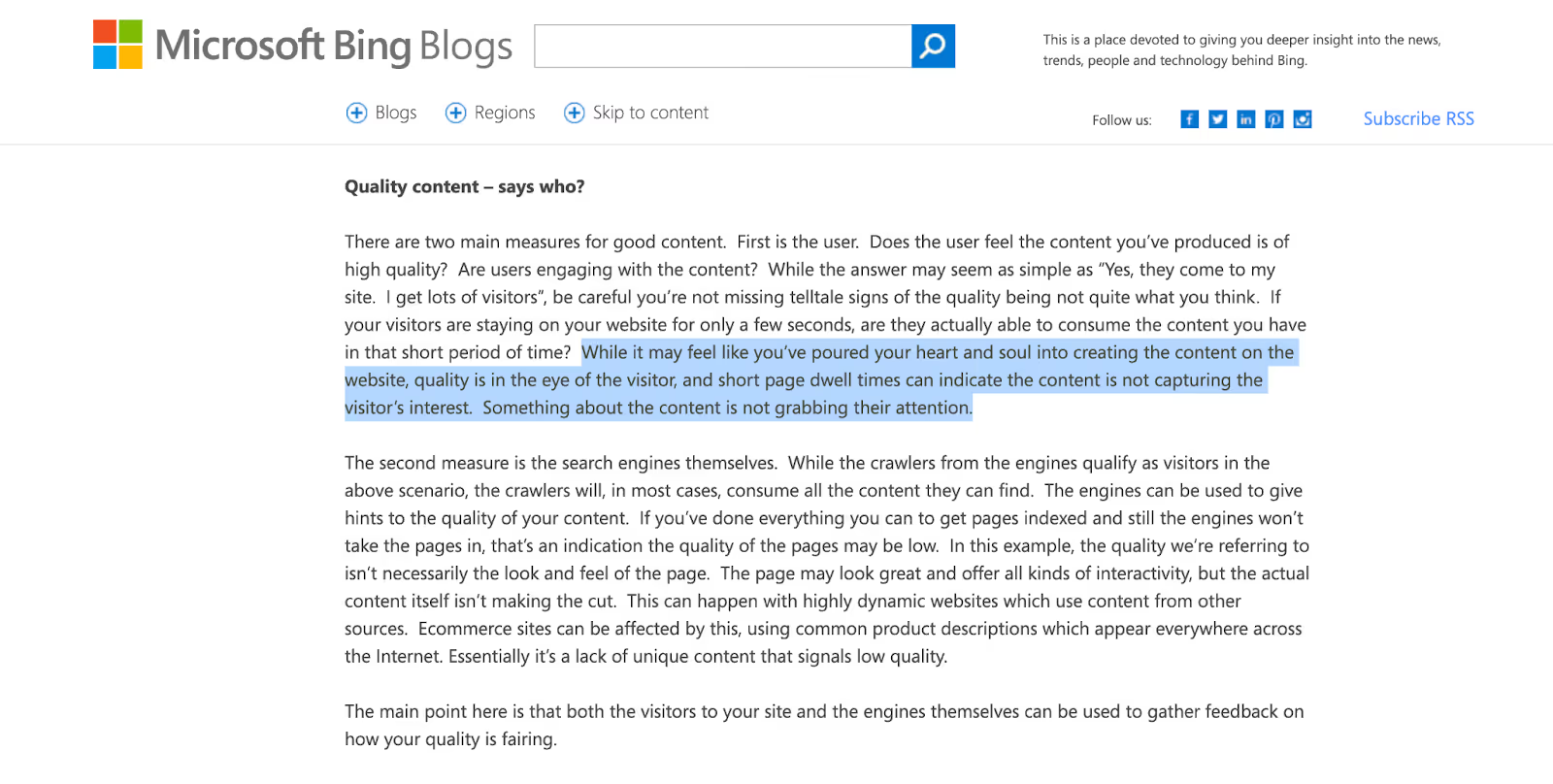
So What About Google?
This is where it gets more interesting and a little contradictory.
The U.S. Department of Justice released a 2016 slide deck, produced by Google’s Eric Lehman, which discusses different ranking factors. I thought that this slide from that deck was particularly interesting:
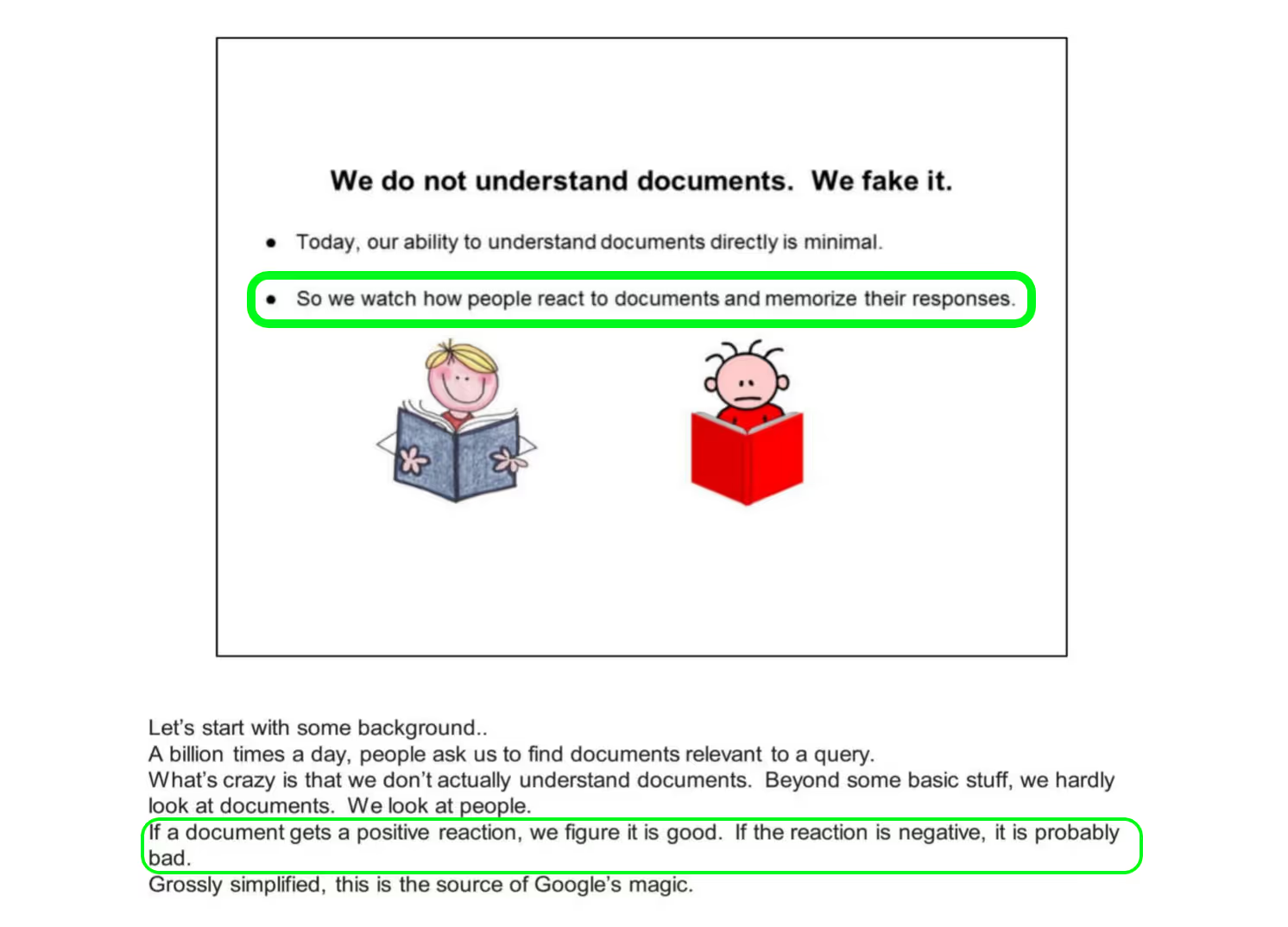
In the slide, Google acknowledges that they don’t understand documents and, in other words, that they fake it.
Google goes on to say that if a document or a search result gets a positive reaction, they figure that it’s good. Conversely, if a document or a search result gets a negative reaction, they assume that it’s probably bad.
In this slide deck, Google doesn’t define what makes for a positive or negative reaction; however, they do make it clear that this data contributes to what future searchers experience:
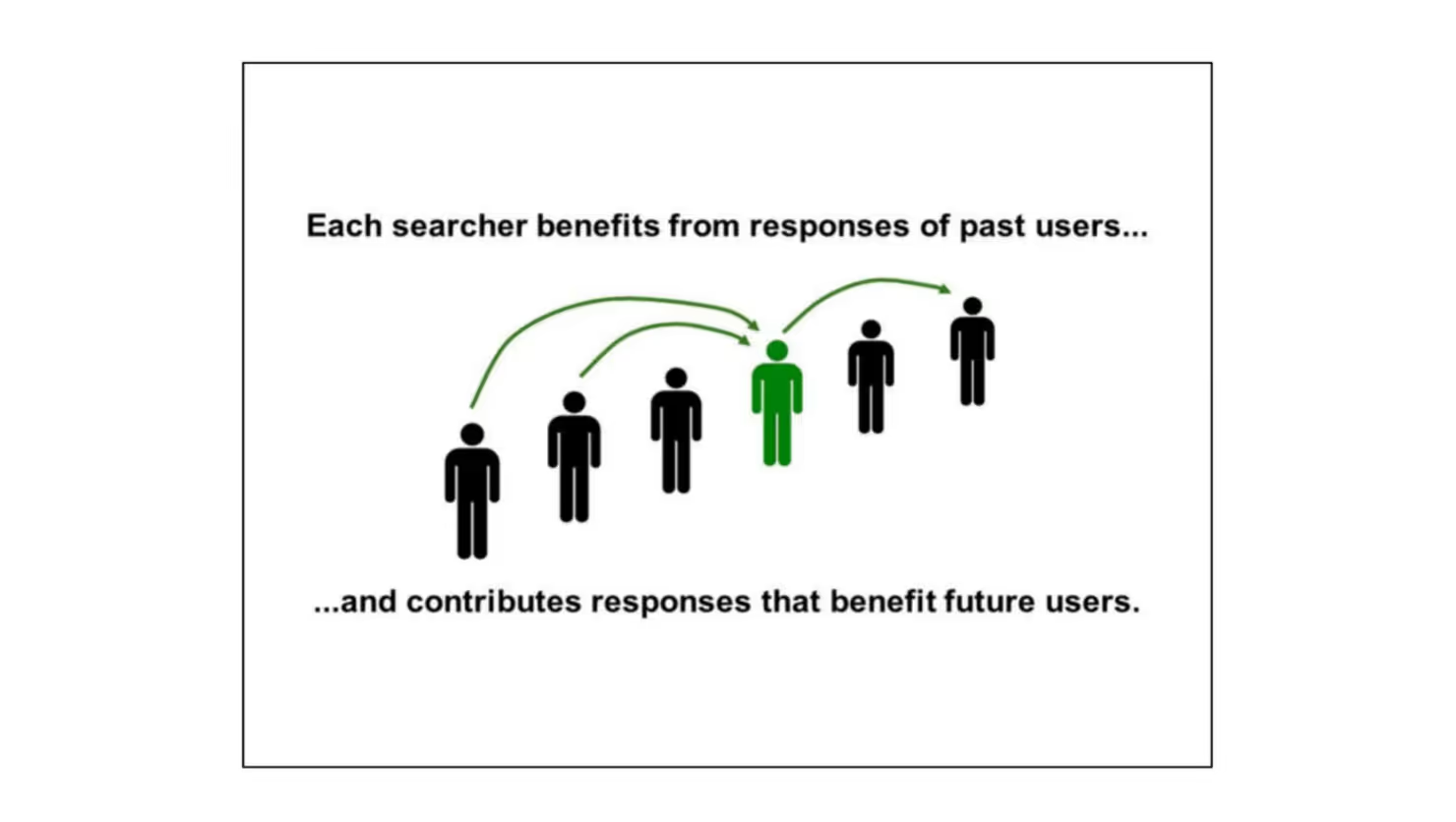
We could argue that dwell time is a metric that quantifies either a positive or negative reaction to a document or webpage. In 2017, Head of Google Brain Canada Nick Frost commented on Google’s use of click data in training its machine learning algorithms, saying:
“So when search was invented — like, when Google was invented many years ago — they wrote heuristics that had [to] figure out what the relationship between a search and the best page for that search was. And those heuristics worked pretty well and continue to work pretty well.
“But Google is now integrating machine learning into that process. So then training models on when someone clicks on a page and stays on that page, when they go back … and trying to figure out exactly on that relationship.”
In other words, Google’s machine learning algorithms at the time were paying attention to the time that users were spending on webpages.
Other SEOs, including Brian Dean, have long argued (for instance, recently on the Optimize podcast) that Google uses user experience metrics to determine the quality of search results.
That being said, in a 2019 Ask Me Anything (AMA) on Reddit, Reddit user Darth_Autocrat asked Gary Illyes about dwell time specifically:
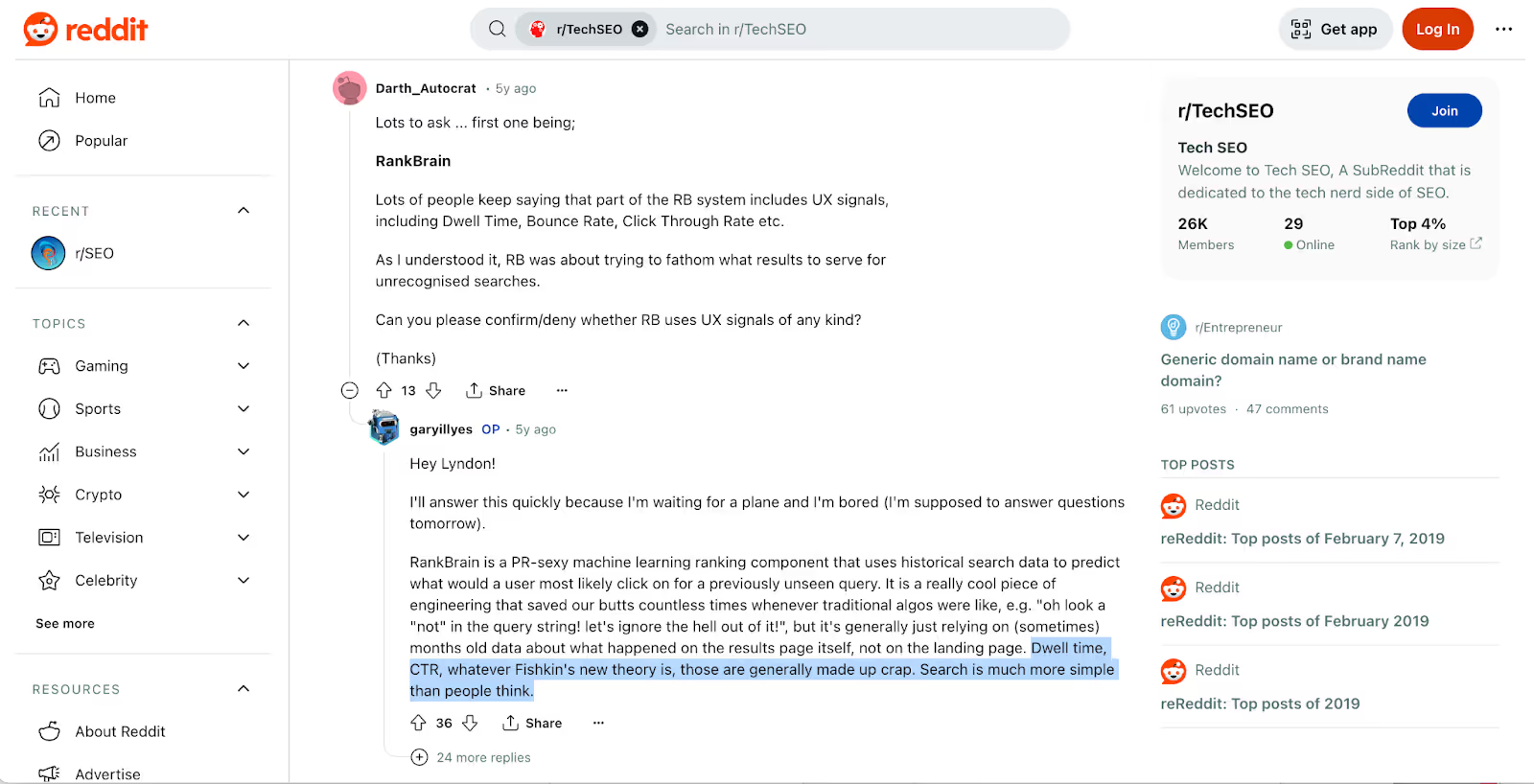
Gary responded by saying that dwell time and other metrics like CTR are generally “made up crap.” Another Reddit user, miasmatix93, then asked for additional clarification:
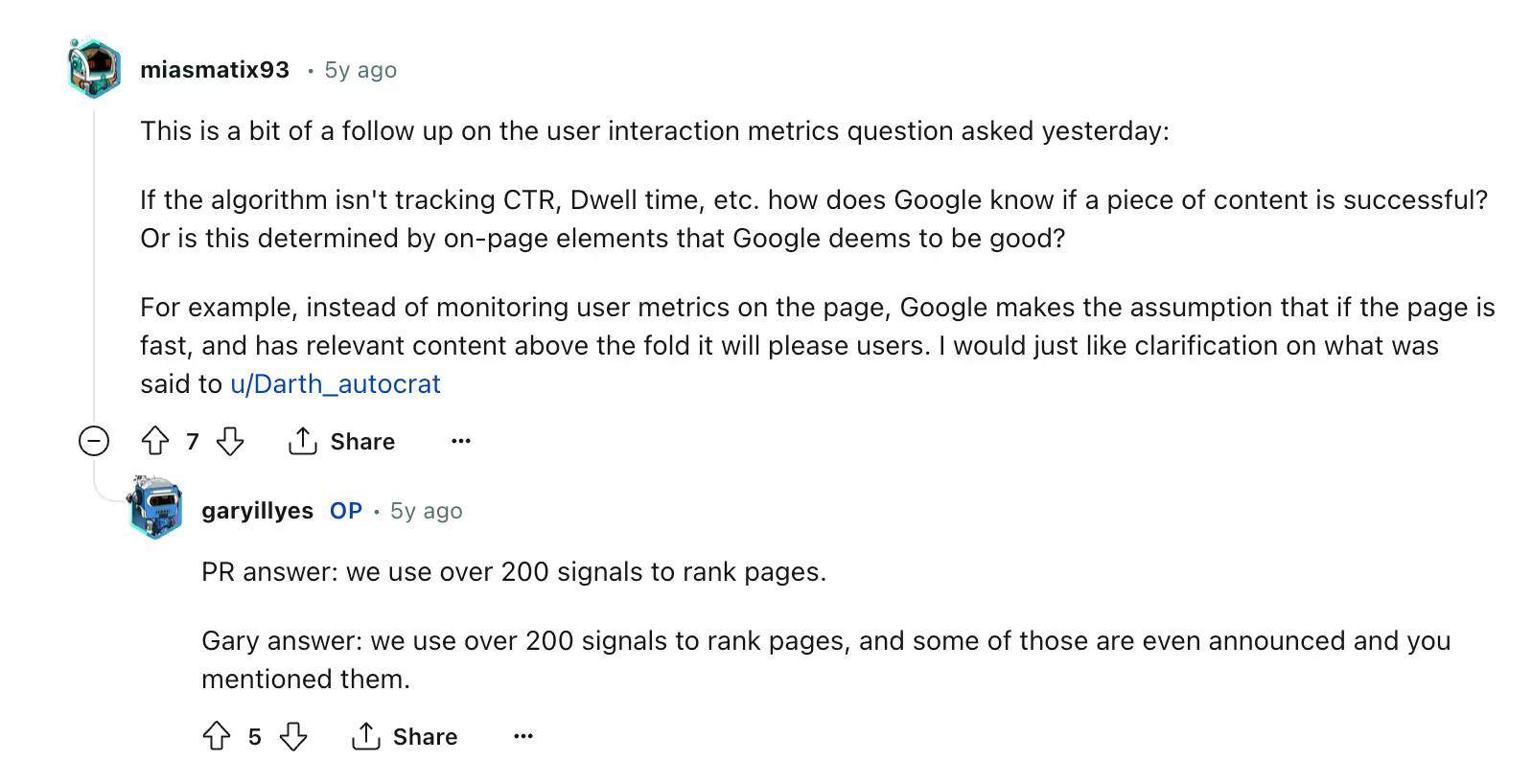
Gary reiterated what Google’s has stated publicly: that there are more than 200 ranking signals. But he didn’t directly answer the question.
On Twitter in 2019, Google’s Martin Splitt chimed in when Google was asked about dwell time specifically:
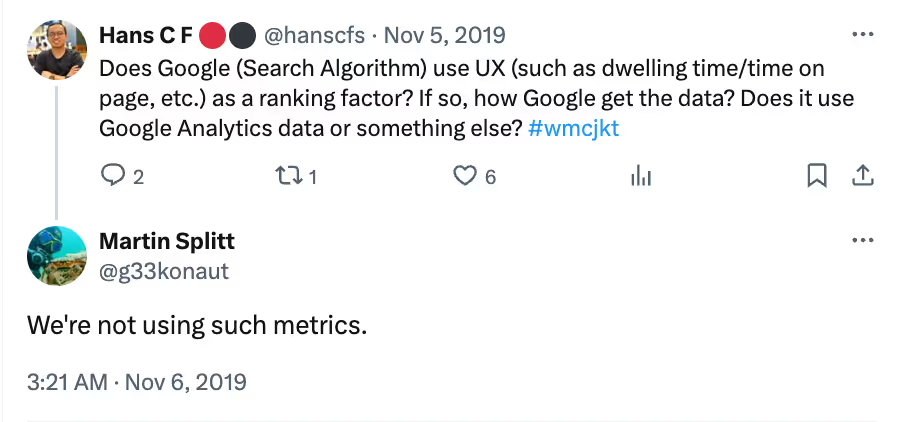
Martin reiterated that Google is not using metrics such as dwell time.
My guess would be that Google doesn’t use dwell time, as they likely don’t call it dwell time internally, or at least that isn’t the documented name of the ranking factor. Therefore, dwell time isn’t a ranking factor.
However, based on the documents released by the U.S. Department of Justice, I think it would be fair to argue that Google is likely using metrics like dwell time to try to quantify reactions to and quality of search results. We just don’t know what the proper name for these metrics is.
The older I’ve gotten, the more I’ve tried to focus on doing what’s best for the searcher.
When reviewing our webpages’ performance, I consider metrics like time on page or dwell time, bounce rate, and scroll depth, as they help me to quantify user experience, and to determine the quality of the results I’m giving searchers. If improving the quality of my webpages increases dwell time, I’d expect it, at a minimum, to have a positive impact on actual business outcomes for our company (in our case, conversions).
The Flip Side of Dwell Time
While dwell time may be a good metric for quantifying the user experience your pages provide, it’s by no means a perfect metric for all search queries.
If a page is quickly delivering on the query’s search intent, a very low dwell time might actually indicate that the search result is a high-quality one.
For example, for a search query like “current time in Hawaii,” you’d expect the dwell time of the top-ranking pages to be very low.

The search intent of this keyword is to quickly find out the current time in Hawaii. The user isn’t looking for an ultra-mega-super guide on how Hawaiians have measured time through the ages.
So, I’d imagine that the dwell time on a page like this is only a few seconds.
Does that make this page a bad one? No.
I imagine that almost all users who come to this page get exactly what they’re looking for and that the return-to-search rate after visiting this page is very low.
In short, we can track dwell time, but we need to pay attention to it only if the webpage is serving keywords for which a high dwell time would be correlated with the webpage’s quality. For example, if someone is searching with a keyword like “internal linking SEO,” there’s probably a lot they want to know about this topic, and dwell time might be indicative of the quality of a webpage about the matter.
How to Improve Dwell Time
Improving dwell time could, in theory, lead to improved performance on SERPs and will likely help improve business outcomes and conversion rates. Some common tactics to improve dwell time include creating engaging content, ensuring your website loads fast, making it easy for users to navigate your site, and adding interactive elements to your pages.
Write Engaging Intros
First things first: I recommend never starting a piece of content with “In this article.”
You want to start off hot. You want to write a compelling introduction that recognizes the search intent of the primary keyword you’re targeting. And you want to nail the primary keyword quickly in your piece.
Search intent is the reason that someone is doing a search. And the primary keyword is the primary keyword or most searched keyword in a grouping of keywords that you’re trying to optimize for.
With our introductions, we try to give the reader exactly what they’re looking for — in other words, a quick answer to their question. From there, we try to explain to readers what else they might want to know or consider, leading them to continue reading our article.
Go In-Depth
Simply put, you could write more in-depth content that makes readers stay on your page longer.
For example, in the article that you’re reading now, I could have simply written a 400-word description of what dwell time is. Instead, I’ve created a fairly detailed guide that highlights multiple comments from Google’s team, source material from Google’s antitrust case, and commentary from me about how we’re working to improve scroll depth and dwell time on our website.
If you provide searchers with more helpful content to consume on your webpages, they’ll stay longer.
I don’t believe in hitting a word count just for the sake of hitting a word count. You want to make each word matter and add value. Our Optimize toolset will provide you with suggested word counts, among many other factors to consider optimizing your content for.
Include Engaging Videos and Graphics
No one wants to stare at a giant wall of text. At a minimum, you should use paragraph breaks generously in your content pages.
To take it a step further, it’s often wise to include helpful videos and graphics within your pages to keep visitors engaged. On the Optimize podcast, we chatted with Aakash Shah from Wyndly. At Wyndly, they embed helpful video content into their content pages directly:

Videos are incredibly helpful, so they keep people engaged and on your webpage longer.
If videos aren’t your jam, consider creating high-quality graphics to accompany your content. At Positional, we create unique graphics that explain complex topics, as we’ve done in our guide to internal linking:

Going the extra mile with helpful videos and graphics should keep searchers on your webpages longer and provide for a better experience.
Prioritize UX/UI
When a user first visits your website from an organic search, they’ve probably never been there before.
You should present a professional and trustworthy website and optimize the above-the-fold section of your webpages.
Present social proof, make it easy to scroll into your content, use fantastic featured images, present clear author bylines, and so on.
After a reader lands on your page in that split second, they need to decide whether they trust you enough to continue consuming content from your website. Give them every reason to believe that your website will present high-quality information.
And it might go without saying, but you should also ensure that your website’s mobile layout and interface provide a high-quality experience for visitors reaching your page on smaller screens.
Add a Table of Contents
As a pro tip, consider adding a table of contents to your content pages. Users love tables of contents. They’re helpful for navigation, and they allow visitors to find exactly what they’re looking for quickly and easily.
You’re likely staring at our table of contents directly to the left of this paragraph. Hopefully, it has been helpful for you in navigating this long piece of content, and I bet it has kept you on our page longer.
Tracking Metrics Like Dwell Time
As we’ve mentioned, dwell time is the time that a searcher spends on your webpage between clicking on it from the SERP and returning to the SERP.
And while this metric is straightforward, getting it can be difficult.
Using Google Analytics 4
Most of us are using Google Analytics 4 (GA4) by now. Unfortunately, Google does not provide dwell time directly in GA4. In GA4, Google provides the average engagement time:

To be clear, this is not dwell time. According to Google, “Average engagement time = (The total length of time your website was in focus or your app was in the foreground across all sessions) / (The total number of active users).”
However, you could apply a filter to look at the average engagement time from users where the source of the traffic is “Google / organic.”
Using Positional
You can use Positional’s Content Analytics toolset to see time on page:

Time on page is provided alongside several other metrics, including scroll depth and bounce rate. Similar to GA4, Positional doesn’t provide an exact calculation for dwell time, but metrics like time on the page are in the same general area.
Final Thoughts
Google has reiterated that dwell time is not a ranking factor.
That being said, Google’s Nick Frost suggested that the search engine’s machine learning models use metrics like dwell time to better understand the quality of search results. And in the redacted documents from the U.S. Department of Justice, we saw that Google uses positive and negative reactions to documents or webpages to determine whether search results are helpful or unhelpful.
My guess is that Google doesn’t call it dwell time but that, instead, they’ve got other metrics similar to dwell time that they use to understand how searchers are engaging with search results and the quality of those results.
In any case, by improving dwell time, we will, by definition, keep visitors on our pages longer and, in the process, give ourselves more opportunities to convert them.
But as we’ve discussed, depending on the keywords you’re targeting, dwell time might not be the best metric to track. For keywords that require a near-instant answer, an unnecessarily long dwell time might actually suggest that your page isn’t delivering on the required search intent.
Improving dwell time is largely an exercise that makes your webpages more helpful. Add video, add graphics, go in-depth, and build trustworthy webpages with a clean UX/UI.
We will work to update this article as new statements emerge about dwell time.





